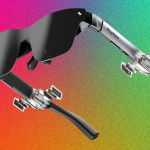Four years ago, my team set an ambitious goal: build the smartest recommendation platform on the market. Since then, our algorithms have empowered companies of all kinds to provide tailored product and content recommendations, all without using cookies or invasive strategies.
Our algorithms are so precise, they can leverage only a few on-site actions from a consumer to predict what else they’ll like. Ostensibly, that would seem to be the happy ending.
But NFTs are different.
The past two years have shown us that NFTs’ influence is growing, and fast. NFTs hold a tremendous amount of potential not only for buyers, but for artists as well.
The purchase of an NFT doesn’t only reflect a buyer’s taste, it also tells us what they think might be a prudent financial investment.
Yet, that potential isn’t being fully tapped. The inability to predict what NFT buyers want represents one of the main issues preventing NFTs from going mainstream and digital artists from being amplified. The challenge lies in solving the “cold start” problem for NFTs, where it’s nearly impossible for brands to provide accurate recommendations for new and anonymous users.
First and foremost, shopping for NFTs isn’t like shopping for anything else we usually buy online. Thousands of new NFTs are bought and sold every week, buyers use multiple wallets, and they tend to be completely anonymous.
Each of these attributes contradicts what we expect with online shopping. We expect a finite number of pairs of jeans, for instance, not a never-ending supply of choices. We tend to link one credit or debit card, and while most online consumers today are, in fact, anonymous, there’s still usually the option to let a site remember your preferences.
Powered by WPeMatico






